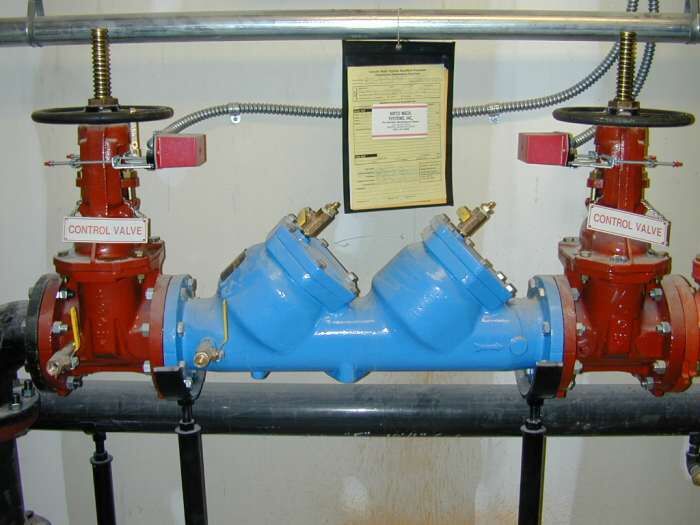Floodproofing
Install Dry Floodproofing: Backflow Preventers
What Is It?

City of Lincoln
Backflow preventers (also known as backwater orbackflow valves and backflow prevention devices) are installed on sewage pipes to prevent contaminated water from flowing back into a building’s systems or into public drinking water systems during sewage overflow events. Backflow events often occur from flooding or heavy rainfall, but can occur from any sudden fluctuations in water pressure in the public water system, including water main breaks and fire-fighting.
The Uniform State Plumbing Code of Massachusetts mandates backwater preventers for all buildings containing plumbing fixtures located below the manhole cover serving the building. Property owners are responsible for installing and maintaining backflow valves. Annual and semiannual tests and inspections by MassDEP-certified backflow testers are required. There are a number of types of backflow valves approved by the state for different building sizes and types, most of which utilize spring-loaded check valves, as well as other relief and shutoff valves to prevent back pressure backflow and back siphonage. All water lines to the building must have backflow valves, greatly increasing the cost for large commercial buildings.
Benefits
- Protects potable water and building systems from backflow contamination during flooding events
Drawbacks
- Extensive regular inspection and maintenance required by law to ensure long service life and functionality
- Costly to install in larger commercial buildings
Regulatory Impacts and Requirements
- MA Uniform State Plumbing Code 248 CMR Section 2.09(4) – All existing or new building drains from plumbing fixtures liable to backflow (all plumbing fixtures located at an elevation below the top of the manhole on the DPW sewer serving the fixture) are required to have backwater valves installed at the owner’s expense
Financing Options, Incentives, and Rebates
- Backflow valves are mandatory if a building is deemed to be at risk of contaminating building or public water supplies during stormwater overflow events.
NEWS
- "Mayor Announces Solution to Basement Flooding in Southgate," The News-Herald, February 1, 2016
- "Brisbane River Backflow Valves in Place within Weeks," The Brisbane Times, January 15, 2014
RESOURCES
- Boston Water and Sewer Commission: Regulations Governing the Use of the Water Distribution Facilities
- NYC Department of Environmental Protection: Backflow Prevention Outreach Program - FAQ
- City of Lincoln, NE: Backflow Prevention Frequently Asked Questions
- Massachusetts Department of Environmental Protection: Cross-Connection Control Program Manual


